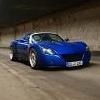Bugatti EB 110
-
Das könnte dich auch interessieren
-
Porsche 928 S4 Clubsport: Bericht und Details
Von LittlePorker-Fan
-
Details zum Bugatti Veyron
Von Massman
-
Daten und Infos zum Bugatti Veyron
Von schehf
-
Fakten zum DeTomaso Pantera Si
Von SiTarga
-


Empfohlene Beiträge
Archiviert
Dieses Thema ist archiviert und für weitere Antworten gesperrt. Erstelle doch dein eigenes Thema im passenden Forum.